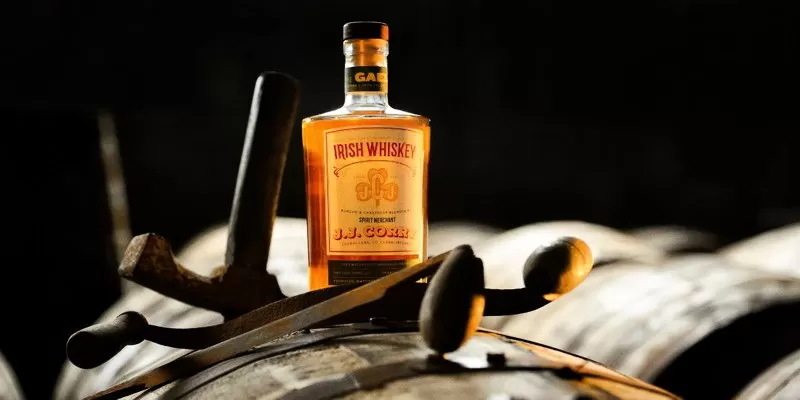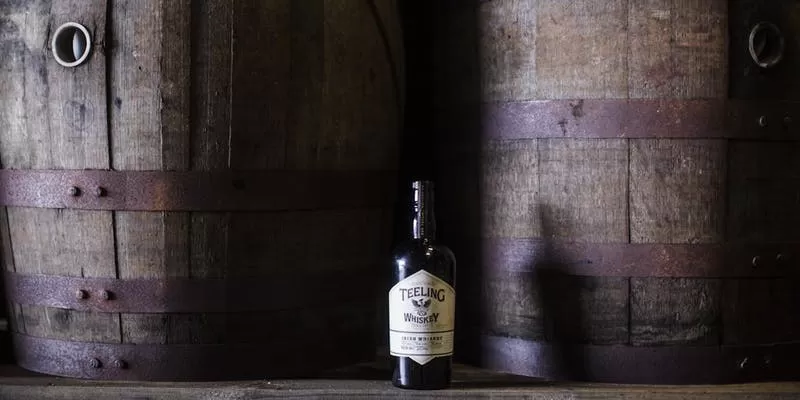
Compare single malt and blended whiskeys
Whiskey is not just an alcoholic drink. It’s a real lifestyle bottled up. Whiskey symbolizes success, confidence in yourself and your future. The drink of real men, it is strong and burning, but at the same time it has a unique taste.
It’s hard to say where whiskey came from. Originally originating in Scotland and Ireland, it soon made its way to America, where, thanks to the use of corn wort, it sparkled with new flavors and became a traditional American drink.
That is why now on the shelves of alcoholic beverage stores you can find hundreds of varieties and brands of scotch tape. And finding the right one can be tricky. Which is better to choose — single malt or blended? Or maybe even grain?
In this article, we will figure out how single malt whiskey differs from blended whiskey, and at the same time determine which one is better.
How whiskey is made

In principle, the difference between single malt and blended whiskey is extremely simple and obvious. The first is made from spirits of one distillery, obtained from the same grain crop, and the second is mixed from spirits from different distilleries.
For a person who is just getting acquainted with the world of spirits, the above definition may be at least incomprehensible. What distilleries? What are the harvests? What alcohols? Therefore, we will understand a little how scotch and similar drinks are generally produced.
The technology, in fact, is both simple and complex at the same time:
-
First, prepare the malt. The raw materials for it can be a variety of crops. In Scotland and Ireland, barley, wheat and rye are mainly used. In some cases, even buckwheat. In the US, it’s corn. The grains are sorted, dehusked and dried, and then thrown into the malthouse with a certain temperature and humidity level. After 7-10 days, the «cereals» germinate and become malt;
-
The malt is sent for drying. The traditional scotch recipe involves fumigating sprouted grain with peat and beech smoke. In this way, the malt is “smoked” and also acquires a unique aroma. However, you can dry without smoke — this is how they do it in Ireland and the USA;
-
The dried malt is ground into flour and mixed with hot water, and then left for 8-12 hours. As a result, the resulting liquid acquires a sweetish aftertaste. It is called «wort» and is distinguished by a high content of carbohydrates (both starch and simpler ones);
-
Yeast is added to the wort and left warm for a couple of days. During this time, fermentation occurs in the liquid. The liquid obtained after 2 days is similar to beer in taste and has a strength of about 5%. The alcohol in the wort is obtained from the breakdown of carbohydrates (starch and glucose) by the yeast;
-
The fermented wort is distilled by evaporating water and alcohol from it. They do it twice. The fact is that after the first distillation, a rather “dirty” and low-concentrated liquid with a strength of up to 30% is obtained. In Scotland it is called «weak wine». After the second distillation, whiskey alcohol is obtained, having a strength of about 70%;
-
The whiskey alcohol is then diluted with water. 70% is a very high fortress. Therefore, water is added until the «norm» is reached, which can be 32-50%. But after that the most interesting begins.
Of course, this scotch is already drinkable. But its taste will be infinitely far from ideal. Therefore, it is poured into barrels.
The ideal solution would be aging in sherry casks. During the time spent in them, scotch acquires an extremely rich, rich aroma, and a luxurious taste. The color of the drink also changes slightly. But scotch aged in sherry casks is one of the best on the market.
Since there are not enough sherry casks for everyone, ordinary oak casks can be used. But there is a «trick» here as well. To improve the taste, oak barrels are treated with cheap sherry. Or use those containers in which bourbon was previously aged.
The longer the tape is aged, the softer it becomes. But the standard for inexpensive varieties is three years in cask.
After three years in a barrel, the scotch can be immediately bottled or sent to the distillery to receive a blend — a mixture of several varieties of whiskey from different distilleries.
And by the way, some recipes do not involve sprouting malt. Scotch made from whole barley, wheat, or corn is called «grain.» Its taste is slightly different from other types of this strong drink.
single malt whiskey

So, single malt scotch is made at one distillery, from one type of malt. In most cases, even grain from the same harvest is used. This allows you to preserve the originality of both the distillery and the variety of scotch.
When it comes to industrial scale, it turns out that single malt scotch is quite difficult to prepare. The taste of the drink largely depends on the characteristics of the grain. And they, in turn, slightly, but change from harvest to harvest. So maintaining the same flavor profile across all batches of single malt whiskey can be quite difficult.
On the other hand, true connoisseurs of spirits, who are able to distinguish even the most subtle shades of taste, often choose single malt whiskey. And sometimes they are «attached» to one distillery. After all, well-known whiskey producers never change the temperature conditions of fermentation, the timing and methods of drying, as well as the types of distillations and barrels for aging.
Thus, single malt whiskey has an original taste and aroma. And this is especially appreciated by lovers of strong drinks.
So, let’s sum up.
Advantages
-
Original taste and aroma, which are preserved by each distillery through the use of the same manufacturing technology;
-
The highest quality.
Flaws
- Expensive and rare.
The high quality of single malt whiskey is due to the fact that distilleries bottle only the best varieties. Mediocre are sent for blending. Single malt whiskey is a real «calling card» of the distillery, and it is at least unprofitable for producers to produce something of not very high quality.
Blended whiskey

Blended whiskey is a mixture that is obtained from several types of whiskey. Usually drinks from one type of malt are mixed, but in some cases alcohols obtained from different types of grain can be added to the blend.
There are two reasons to make blended whiskey:
-
The blend may differ in unusual taste properties or aroma. This allows you to make the drink softer and more pleasant to use;
-
From several mediocre whiskeys, one is more or less good. Different varieties simply offset each other’s shortcomings.
Blending to improve taste is quite rare, and the finished product has a rather high price. Usually, malt and grain whiskey is taken for these purposes, then kneaded in special containers and sent for 6-8 months in oak barrels to age.
This blending also makes it possible to create a blend with permanent properties. Its taste and aroma will not change from batch to batch, and weather conditions are unlikely to affect the quality of the finished drink.
However, in most cases, blending allows you to simply create a cheap, but not disgusting whiskey. Various spirits, including both grain and malt, are mixed to make a drink with optimal taste. Such whiskey is aged quite a bit — a few weeks after blending.
Blended whiskey is one of the most common on the market. Approximately 80% of all whiskey produced in the world is just that. The low price, which can be about 15-20 $ for a 0.7-liter bottle, makes it extremely attractive to the general consumer. Even such eminent brands as Jack Daniel’s, White Horse or Johnny Walker are just blended whiskey.
This is not to say that blended whiskey is bad. It’s more of a drink for mass consumption. In addition, he has the most important plus — the invariance of the blend, thanks to which the taste of whiskey is preserved from batch to batch, from year to year.
So, let’s sum up.
Advantages
-
Uniformity. The taste and aroma of alcohol will be the same regardless of the batch or year of harvest;
-
Low price and wide availability. Blended varieties of the drink can be found in any stores, alcohol stores and so on. And their cost will not “hit your pocket” too much.
Flaws
- Most of the time the quality is pretty mediocre. The drink may not be soft or pleasant enough.
It is also worth noting that quite strange products have recently begun to appear on store shelves — like “whiskey drink” or “drink made using whiskey technology”. An example of such a product is Fox & Dogs. These are already budget options for the mass market, in which whiskey is only the root in the word “whiskey”. As part of their blend, of course, there are whiskey spirits, but there can be no talk of any endurance or authenticity of the production process.
Comparison
First of all, it is worth noting that single malt whiskey is an extremely niche product. Most likely, it is unlikely to be of interest to an ordinary person who does not “hunt” for varietal characteristics. In addition, the most attractive thing about single malt whiskey is that the taster can appreciate the craftsmanship in one sip.
That is, for an ordinary person who is not going to sit with a cigar and a glass on the balcony, looking at the Scottish sunset and enjoying the talent of the distillery, single malt whiskey is a product of little interest and definitely too expensive. And preparing cocktails based on this drink is an unjustified waste of money.
Blended whiskey is a product for mass consumption. But that doesn’t make it better or worse. In what aspects, such as consistency in taste, it even surpasses single malt. It is also ideal for cocktails, as it has a characteristic whisky aroma, but at the same time it is not too expensive.
A little about other varieties
It is also worth mentioning other varieties of whiskey:
-
Grain. Malt does not germinate;
-
Bourbon. Exceptionally American variety. It is prepared only from corn, due to which it has a characteristic yellowish color and a very mild taste. When aged in barrels charred inside, it acquires a pleasant sweetish aftertaste. When choosing a bourbon, the color of the liquid plays a decisive role — ideally it is rich gold;
-
Tennessee. Also an exclusively American variety. Malt for it is made from a mixture of cereals, in which corn occupies at least 51%. It features a special filtration system, thanks to which the drink becomes especially soft;
-
Pure-pot-still. An Irish recipe for which the malt is made up of both sprouted and unsprouted grains. In addition, other grains are added to it — rye, wheat and corn. Then it undergoes a triple distillation, which ensures the lightness, pleasantness of the drink and a recognizable spicy-fruity bouquet.
Thus, the world of whiskey is not limited to single malts and blended varieties. In many cases, this strong liquor is already at the stage of malt harvesting a mixture of various grains.
Добавить комментарий
Для отправки комментария вам необходимо авторизоваться.